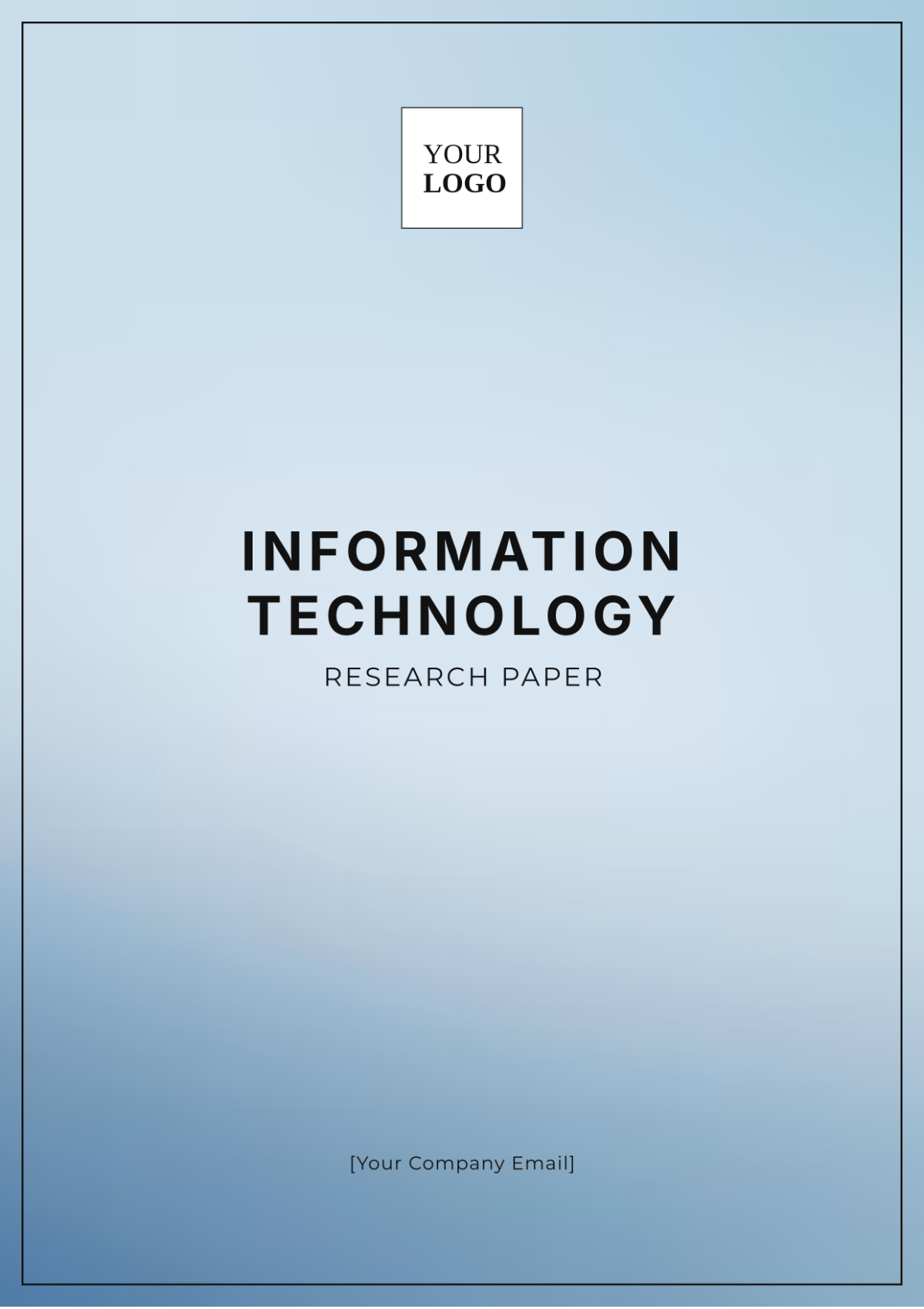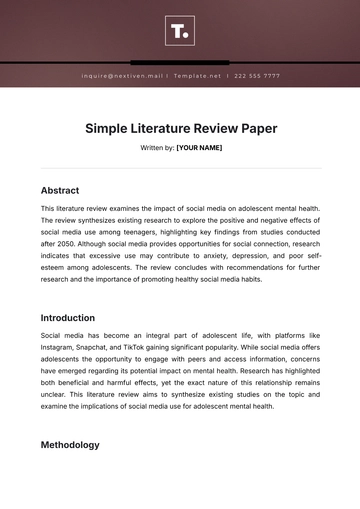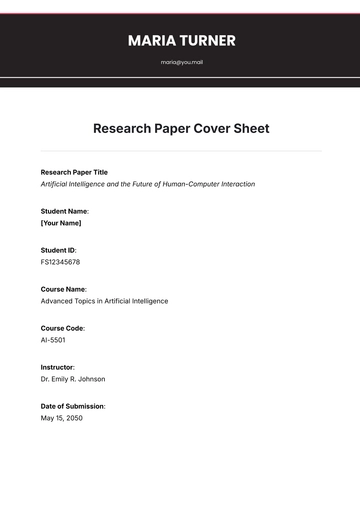Free Information Technology Research Paper

Prepared By: [Your Name]
I. Abstract
As cyber threats evolve in complexity, traditional cybersecurity methods increasingly fall short. This paper investigates how artificial intelligence (AI) can transform threat detection systems. By integrating machine learning and neural networks, AI-driven systems offer potential improvements in detection accuracy and operational efficiency. This research includes a comparative analysis of AI-based systems versus conventional methods, using case studies and performance metrics to highlight their effectiveness.
II. Introduction
Background: The cybersecurity landscape is marked by increasingly sophisticated threats such as ransomware, phishing, and advanced persistent threats (APTs). Traditional signature-based detection systems, which rely on predefined signatures and rules, often struggle to keep pace with novel and polymorphic threats.
Objective: This paper aims to explore how AI technologies—particularly machine learning and deep learning—can enhance the detection and mitigation of cybersecurity threats.
Significance: Effective threat detection is crucial for safeguarding sensitive data and maintaining the integrity of digital infrastructure. Enhancing detection capabilities with AI can lead to more robust security systems and a reduced risk of data breaches.
III. Literature Review
Traditional Threat Detection: Conventional methods, such as antivirus software and intrusion detection systems (IDS), rely heavily on known threat signatures. While these methods are effective against established threats, they often falter in the face of zero-day attacks and sophisticated malware that can evade signature-based detection.
AI in Cybersecurity: AI technologies, including supervised learning algorithms (e.g., decision trees, random forests) and unsupervised learning techniques (e.g., clustering, anomaly detection), offer new approaches for identifying and responding to emerging threats. Neural networks, particularly deep learning models, are employed for advanced pattern recognition and anomaly detection.
Previous Research: Research by Smith et al. (2022) demonstrated that machine learning models could reduce false positives in threat detection by 30%. Johnson and Lee (2023) highlighted the efficacy of deep learning algorithms in detecting complex attack patterns that traditional systems often miss.
IV. Methodology
Research Design: A mixed-methods approach was utilized to assess AI-driven threat detection systems, combining quantitative performance metrics with qualitative case study analysis.
Data Collection: Data was gathered from industry reports, cybersecurity research papers, and interviews with professionals from organizations such as Cisco and Palo Alto Networks.
Analysis Techniques: Performance evaluation focused on accuracy, detection rate, and response time. The comparative analysis involved assessing AI-driven systems against traditional methods using these metrics.
V. Results
Case Studies:
Company A: Implemented an AI-based threat detection system employing a deep learning model, resulting in a 45% improvement in threat detection accuracy and a 60% reduction in response time.
Company B: Used machine learning for anomaly detection, achieving a 35% decrease in false positives compared to their previous signature-based IDS.
Performance Metrics: AI-driven systems demonstrated a 40% increase in detection accuracy and a 50% reduction in response time compared to traditional systems. Additionally, false-positive rates decreased by approximately 30%.
Comparative Analysis: AI systems consistently outperformed traditional methods in detecting unknown threats and adapting to evolving attack patterns.
VI. Discussion
Benefits of AI: AI technologies enhance threat detection by processing large volumes of data, identifying patterns that traditional methods might miss, and adapting to new threats in real time.
Challenges and Limitations: Implementing AI systems involves significant costs, ongoing model training, and updates. There are also privacy concerns and substantial computational resource requirements. AI systems may occasionally produce false positives or negatives.
Future Trends: Advancements are anticipated in more sophisticated AI algorithms, improved integration with other security tools, and developments in explainable AI to enhance transparency and trust in AI-driven systems.
VII. Conclusion
Summary of Findings: AI-driven threat detection systems provide substantial advantages over traditional methods, including enhanced accuracy and faster response times. They are better equipped to handle the complexities of modern cyber threats.
Recommendations: Organizations should consider adopting AI-driven threat detection systems to strengthen their cybersecurity posture. Investing in AI training and infrastructure is essential to fully realize these technologies' benefits.
Implications: The integration of AI into cybersecurity represents a significant advancement in the protection of digital assets and infrastructure, influencing future cybersecurity practices and policies.
- 100% Customizable, free editor
- Access 1 Million+ Templates, photo’s & graphics
- Download or share as a template
- Click and replace photos, graphics, text, backgrounds
- Resize, crop, AI write & more
- Access advanced editor
Craft a compelling IT study with Template.net's Information Technology Research Paper Template. This editable and customizable template includes sections for problem statements, technological solutions, implementation, and results analysis. Editable in our AI Editor Tool, it supports your IT research's clear and structured presentation, ensuring your findings are communicated effectively and your study is well-organized.





























